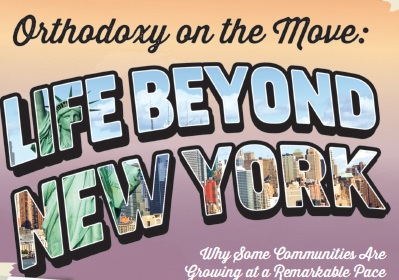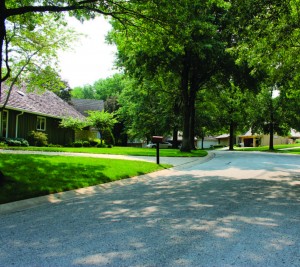Orthodoxy on the Move: Life Beyond New York
In our cover story, we visit Orthodox communities across the country that have witnessed significant growth over the past few years. Places like Kansas City, Springfield, New Jersey and Detroit, Michigan are flourishing . . . the question is, why? We asked key players involved in building these and other frum communities: What are the key ingredients necessary to grow a community? In the section that follows, we share the stories of a few thriving communities and the secrets behind their success.
I’ve always wanted to redo Saul Steinberg’s famous New Yorker cover “View of the World from 9th Avenue” as “An Orthodox New Yorker’s View of the World” [Ed.: see the cover of this issue!]. It would have Brooklyn at the center, surrounded by the other boroughs and Long Island, with perhaps Teaneck, Bergenfield as well as Passaic and Lakewood on the periphery and places like Chicago and Los Angeles mere specks on the horizon.
Out of an estimated 700,000 Orthodox Jews in North America, close to 500,000 can be found in New York City, Long Island and Westchester according to the UJA-Federation of New York’s 2011 demographic study (that doesn’t even include the rest of the tri-state area, such as Rockland County, New Jersey and Connecticut). It’s nice to know that Orthodox Judaism is flourishing in the New York area. The bad news is that, well, it’s getting awfully crowded.
Crowding means many things: it means the price of housing has risen way beyond the means of middle-class families and young couples just starting out; it means greater anonymity, a higher-stress lifestyle and fighting for parking spaces. The answer?
Go west, young man . . . or south, or north! “People come to Kansas City, they see our great community and they walk away saying, ‘Who knew?’” says Rabbi Daniel Rockoff of Congregation Beth Israel Abraham & Voliner (BIAV).
Kansas City is one of a number of cities across the country whose Orthodox population has seen tremendous growth in the past five to ten years. In Overland Park, for example, a suburb of Kansas City, BIAV boasts more than 150 families—thirty of whom moved in within the last five years. “We’re trying to create buzz about Kansas City; create some traffic here,” says Rabbi Rockoff.
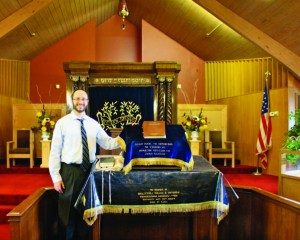
Rabbi Daniel Rockoff of Congregation Beth Israel Abraham & Voliner in Overland Park, Kansas. Photo: Josh Goteiner
Apparently, he’s succeeding; the shul welcomed twenty newborns in the past year alone.
Congregation Israel, a Modern Orthodox synagogue in Springfield, New Jersey, expanded its shul building two years ago to accommodate its growing membership. Now, says Rabbi Judah Isaacs, director of the OU Department of Community Engagement, the shul may have to renovate again—its new quarters are beginning to feel cramped.
While ten years ago Springfield had only a handful of families with parents under the age of thirty-five, today there are almost forty young families. “We’ve been adding almost one family a month over the past year,” says Springfield resident Ben Hoffer.
Down South, Dallas, in the center of the Bible Belt, has a booming frum community as well. Hard to believe that a few short decades ago, Dallas didn’t have much of an Orthodox presence. Today, the city boasts the impressive DATA, the Dallas Area Torah Association, a vibrant community organization that connects Jews to Judaism—along with six kosher restaurants, ten Orthodox synagogues, four yeshivot/day schools and two eruvs.
Why do some communities take off while others seem to limp along? Experts agree that there is one crucial piece to making a community a success: energetic, inspiring leadership. “I believe that you could put a dynamic rav anywhere—even in Alaska—and he will create a community,” says Rabbi Ari Rockoff, brother of Rabbi Daniel Rockoff and the associate dean of institutional advancement at YU’s Azrieli Graduate School of Jewish Education & Administration and the Bernard Revel Graduate School of Jewish Studies. Rabbi Ari Rockoff previously served as director of community partnership at YU’s Center for the Jewish Future (CJF), where he helped grow Orthodox communities.
Recipe for Growth
To grow a community, the rav must consider every member an integral part of his family. I dance with my [congregants] at their simchahs and cry with them when they have tzaros. I daven for “my family” all the time; I have a list of all my members and pray for them in shul and at kivrei tzaddikim.
Secondly, at the first sighting of a machlokes, I do whatever I can to resolve it; discord destroys a community.
Thirdly, the most important ingredient to building a solid community is intense and inspiring Torah learning—in Gemara, halachah and machshavah. You need to engage the entire community in inspirational learning—men, women and children. Without it, a community cannot grow.
Rabbi Moshe Weinberger
Congregation Aish Kodesh, Woodmere, New York
Rabbi Isaacs concurs. “Having a lively rav makes a big difference,” he says.
In Springfield, that means Rabbi Chaim Marcus at Congregation Israel. Descended from a long line of august and influential rabbis, Rabbi Marcus was raised on Staten Island, New York, where his father served as the rabbi of the Young Israel of Staten Island.
“When Rabbi Marcus arrived in 2002, many people only attended shul on Rosh Hashanah and Yom Kippur,” says Hoffer. “Now, most of the people are there on Shabbos, and we have enough members on weekdays to have two healthy minyanim.” Rabbi Marcus, who received semichah from Yeshiva University’s Rabbi Isaac Elchanan Theological Seminary (RIETS), also teaches Judaic studies at Bruriah High School for Girls in nearby Elizabeth.
Dallas has likewise enjoyed excellent rabbinic leadership; in the early days, Shaare Tefilla Congregation was led by the beloved Rabbi Howard Wolk, who currently serves as chaplain of Jewish Family Service in Greater Dallas. The community has grown so large, however, that there is no longer one central shul. “At the beginning, my shul was like a melting pot,” says longtime Dallas resident David Zoller. “Everybody was together in one synagogue. But eventually, the kollel, which had been housed there and attracted a lot of ba’alei teshuvah, broke away and formed its own shul and schools. That was painful in the beginning, but everyone adjusted, and now we’re at a point where we accept that everyone needs to find the style they’re most comfortable with.” Today, Dallas offers a range of religious options, from Modern Orthodox to Yeshivish to Chabad. “We all know each other; everyone is related . . . the heads of the two communities that split are cousins. We help each other out, write each other checks as necessary—we’re too small to be divisive.”
While all agree that a dynamic and dedicated rabbi—and rebbetzin—is crucial to helping a community grow, the burden of leadership does not only fall on them. For a community to truly prosper, it needs both “a great rav and a great lay leadership,” says Rabbi Isaacs. “I have seen communities truly flourish as a result of this combination. There also needs to be an investment in the community—people have to be willing to put time, energy and effort into helping their community grow.”
Rabbi Ronald Schwarzberg, director of the Morris and Gertrude Bienenfeld Department of Jewish Career Development and Placement for YU’s CJF, doesn’t think the recipe for growth is so simple. “A shul doesn’t grow solely because it has a young, charismatic rabbi. There are communities that are challenged to expand and there may be a myriad of complex issues that a community must confront to grow,” he says. “A dynamic and charismatic rabbinic leader needs a cast of committed lay leaders that will partner with him to develop the quality programs and requirements that will attract new membership.”
Coming to the Fair
The OU’s annual Communities Fair provides an opportunity for communities to showcase their strengths and for families to take a look at options outside New York, with booths set up from different cities. “We review each community to make sure it has the necessary amenities, such as a day school, mikvah and kosher food,” says Rabbi Isaacs. “There are some communities that apply without them, in the hope that if they can attract enough people, it will drive demand.” At the fair, communities encourage attendees to join their e-mail lists for further contacts and updates. When the Linden, New Jersey, community built a mikvah, for example, they promptly sent notices to ninety prospective residents.

The Dallas community hosts an annual kosher chili cook-off—just one of the charms of living in a community with a small-town feel.
“We’ve seen communities that have grown because of a few people who were good, aggressive recruiters,” says Rabbi Isaacs. “Places like Cherry Hill and Detroit managed to bring many people in.”
Communities have gotten creative in their marketing techniques, offering freebies to fairgoers that reflect the local flavor: football T-shirts (Denver, Colorado), mini lighthouses (Providence, Rhode Island), Nike souvenirs (Seattle, Washington), even raffled dinner tickets to local restaurants. Zoller, who has a background in marketing and sales, was one of the first to create a professional trade show-style presentation for his city. The Dallas presentation included professional photos, videos and handouts (he created slogans like, “We have an eruv, but we don’t carry our six-shooters on Shabbos!”). In fact, Zoller’s web site (www.movetodallas.org), designed for YU, was intended from the outset to serve as a template for other small communities.
Hannah Farkas, program manager of the OU Department of Community Engagement, adds, “Successful communities use the personal touch to recruit. They don’t just send out generic e-mails; they’ll make follow-up calls to say, ‘When are you coming for a Shabbos?’”
The human element is clearly the most powerful factor in persuading prospective families to visit a community and ultimately decide to move there. “A Shabbat visit is crucial in swaying people to come,” Rabbi Isaacs says. “They see who’s in the community, whom they would be living among.
“It’s like a shidduch; you have to know what you’re looking for. Do you want a community where they have a great Daf Yomi? Or one where they’ll turn a blind eye if you don’t show up to minyan from time to time? Do you prefer a younger crowd or an older one?”
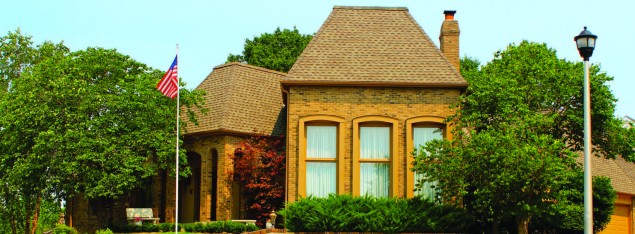
Houses in Kansas City cost between $160,000 and $425,000, with larger houses on lots of 13,000 square feet or more. Photo: Josh Goteiner
Alternatives to Teaneck
Each location outside the Big Apple offers its own unique charm. Quaint picturesque Springfield, only thirty-five minutes from New York City, attracts many who want an affordable community near New York “that’s not Teaneck or the Five Towns,” says Hoffer. “We have the best of both worlds—we’re near the hustle and bustle, but life here is more relaxed.”
Calling all kids
Communities looking to attract young families need dynamic and engaging youth professionals. They ensure that young children are involved in meaningful activities during Shabbat morning davening and have other activities throughout the week. Effective youth professionals make children feel that the shul is their home.
Rabbi Judah Isaacs
Director of the OU Department of Community Engagement
Hiring a dynamic couple to drive the youth department is one of the wisest choices a shul can make. A shul should allocate 16 to 18 percent of it’s operating budget to provide a quality youth program. The top OU shuls invest 25 to 30 percent of their operating budgets on their youth departments. Youth programming is essential.
When kids participate in shul, the family will inevitably participate in shul too. Youth have the power to draw the participation of entire families.
Rabbi Steven Weil
OU executive vice president
Springfield has blossomed into “a warm community of people who are very interested in spiritual growth, regardless of where they fall on the religious spectrum,” says Hoffer. “They all share a desire to be better today than they were yesterday, which creates a growth atmosphere.” The community is fortunate to have a good infrastructure in place: a renovated shul with a house for the rabbi and a beautiful mikvah.
Hoffer describes his hometown as a place that was always a “very nice, simple, warm community. Here when you invite people for Shabbos, often you have to wait three weeks because they’ve already received so many invitations.”
Similarly, in Dallas, visitors are impressed by the Southern hospitality. “Hospitality is key. Here it’s a natural instinct, not a programmed response,” says Zoller. “We embrace all newcomers; we’re happy to show them around or invite them for Shabbos.”
Dallas likes to vaunt its sunny climate by advertising, “It’s always warm in our sukkahs!” “In February, it’s sixty degrees,” Zoller says. “And it’s a clean city too.”
According to Rabbi Daniel Rockoff, the key to making a small community thrive is “a special kehillah that knows how to take people in and include them.
“It’s that warmth and spirit that really attract people,” he says. “The quality of life and the necessary Jewish institutions are just what make it possible.”
The Economics of Living Out-of-Town
Then there’s the ever-important issue of job availability. “In Dallas, we have no state income tax,” boasts Zoller, “and that attracts many Fortune 500 corporations to this area. That, in turn, produces employment opportunities. If someone tells us specifically what he’s looking for, we will do our best to help him find a job.”
Similarly, Kansas City is home to corporations such as Garmin, Hallmark and H&R Block, as well as legal and engineering firms (Kansas City is quickly becoming one of America’s most entrepreneurial cities, according to a recent article in the Huffington Post). Some communities have shrewdly brought headhunters to the OU’s Emerging Communities Fair to recruit employees.
Out-of-town housing is substantially cheaper than New York-area housing—and even when it’s not cheap, the buyer gets more bang for the buck. In a Jewish area of Dallas within the eruv, according to Zoller, a house may cost upward of $350,000, but that means a large four-bedroom house with a two-car garage on a quarter-acre lot (or larger). Kansas City prices fall somewhere between $160,000 and $425,000, with larger houses on lots of 13,000 square feet or more. In Springfield, houses are available for $350,000 to $450,000, with the added advantage of being five minutes away from a train station that gets you to midtown Manhattan in half an hour, or a forty-five-minute commute to areas like Teaneck or Monsey.
Some communities have sought to attract new families by offering economic incentives such as day school grants, housing subsidies, building fund waivers or free JCC memberships. Three years ago, Springfield offered $500 a month toward a first year’s rent or up to $20,000 for help with a down payment on a house. Those numbers went down to $15,000 the second year, $10,000 the third year and will be phased out in the future. “We have about 150 families now, and we would like to attract another twenty-five to thirty more,” Hoffer says.
Dallas, on the other hand, didn’t need to offer incentives. The jobs, weather and strong community are enough, and Zoller can’t even keep track of who’s moved in since the community has expanded so much.

Rabbi Chaim and Lea Marcus, the dynamic rabbi and rebbetzin of Congregation Israel in Springfield, New Jersey.
Photo courtesy of Daniella Hoffer
“Places like Dallas will grow regardless,” Rabbi Daniel Rockoff asserts. And as Zoller points out: “Dallas is also an older community—this year the day school celebrates its fiftieth anniversary. There’s no building fund to pay anymore.”
First-Class Chinuch
For an Orthodox family, finding the right chinuch options for their children is just as high a priority as cheap housing or the perfect job. Dallas now has both day schools and yeshivot. While Springfield does not have a community day school, many families send to nearby Joseph Kushner Hebrew Academy, the Jewish Educational Center or Bruriah High School for Girls. “It can be an issue when there’s only one community school,” Hoffer points out. “If your child has a problem, he has no other options within the community.”
Making Cents of it all
If, as Rabbi Moshe Feinstein, zt”l, suggested, people would commit 67 percent of their tzedakah funds to local institutions (day schools, shuls, mikvaot), our communities would be much more inclined to grow. Memphis and Dallas are examples of communities where leading philanthropic families have made dedicated commitments to invest their charity in their own communities. Their efforts continue to bear fruit—these cities boast a thriving Jewish infrastructure that exceeds the standards of other communities with even larger Jewish populations.
Rabbi Weil
When Rabbi Daniel Rockoff arrived in Kansas City five years ago, there was only a non-Orthodox Jewish day school in place. Instead of attempting to build a new yeshivah from scratch, which would have required a tremendous outlay of money and effort, he teamed up with Hyman Brand Hebrew Academy and added a “Matmidim” Judaic studies track, like a school-within-a-school (see page 46 in this issue). It offers separate Judaic studies classes on par with other day schools, and currently enrolls about forty students who join the other students for limudei chol (secular) classes. Approximately 235 students attend Hyman Brand.
Kansas City has benefited from many other creative initiatives of Rabbi Rockoff, such as the summer intern program, in which Yeshiva University students are placed in internships in the Kansas City area in professions ranging from medicine to marketing. While there, they also actively participate in the Jewish community (some of them even opt to return to live there). Rabbi Rockoff has launched or supported programs that include scholars in residence, a community kollel, NCSY, a “Day of Discovery” on local college campuses, “Schmooze at the Zoo” days and kosher barbecue competitions (not to be confused with Dallas’ much-celebrated annual kosher chili cook-off).
Once happily ensconced in out-of- town communities, new families often appreciate the greater sense of connectedness and tolerance. “In Springfield, you can have women who don’t cover their hair and wear pants who are close friends with a more Yeshivish-style neighbor,” Hoffer says. “In a small community, the advantage is that you become friends with people who aren’t exactly like you.” In a smaller community, each person counts in a way he might not count elsewhere—he’ll probably be needed to complete a minyan or serve on the shul hospitality committee.
“After attending Camp Stone, my fifteen-year-old decided he wanted to start a Bnei Akiva chapter,” Zoller says. “He didn’t have any funding, but he got together with eight other kids and now they have forty members.”
Rabbi Rockoff, paraphrasing Pirkei Avot, puts it eloquently: “In a place where there are no men, people will stand up and become men,” he says. Conversely, “In a place where there are too many men, some may stop being a man.”
Of course, once a community begins to thrive, there’s the challenge to avoid becoming a victim of its own success. “We’ve grown so much in Springfield,” Hoffer says. “Now the challenge will be to retain our small-community character as we keep on expanding.”
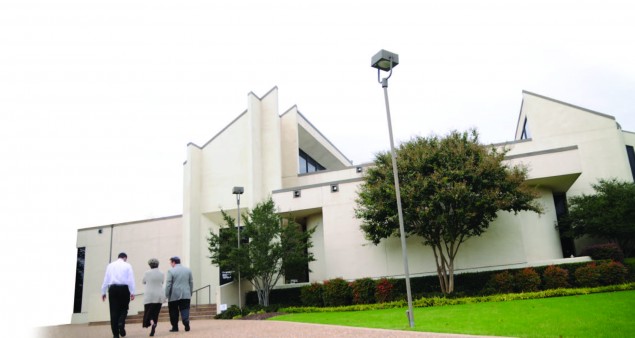
Shaare Tefilla is a Modern Orthodox shul in Dallas with 200 families, most of whom have school-aged children. Photo: Bud Force
Barbara Bensoussan has worked as a university instructor and social worker, and currently writes for Jewish newspapers and magazines.
To learn more about other growing communities, please visit http://www.ou.org/community/programs/jewish-communities/#.UoTt4yeKLoQ

